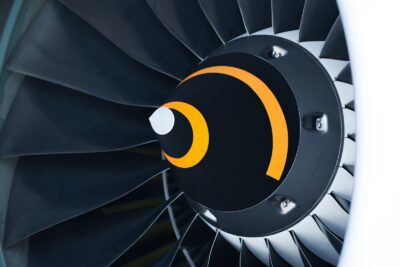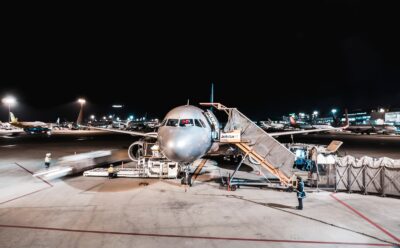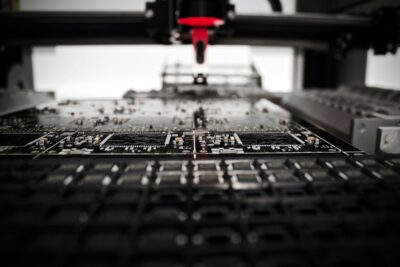The Future of Aviation: Composite Materials in Aircraft Design
The Evolution of Composite Materials in Aviation
Composite materials, such as carbon fiber reinforced polymers (CFRP), are transforming the aviation industry with their exceptional strength-to-weight ratios and remarkable durability. The integration of these advanced materials in aircraft design marks a significant shift from traditional aluminum structures, offering numerous advantages that propel the aviation sector into a new era of efficiency and performance. In Saudi Arabia and the UAE, where innovation and technological advancements are highly prioritized, the adoption of composite materials is not just a trend but a strategic move to enhance aviation capabilities.
The use of CFRP in aircraft design provides a lightweight alternative to traditional materials, reducing the overall weight of the aircraft. This reduction in weight translates to improved fuel efficiency, which is a critical factor in the aviation industry, given the rising fuel costs and the push towards more environmentally friendly operations. For business executives and mid-level managers in the aviation sector, understanding the benefits of composite materials can aid in making informed decisions that enhance operational efficiency and sustainability.
Furthermore, the durability of composite materials contributes to longer service life and lower maintenance costs for aircraft. Unlike traditional materials that are prone to corrosion and fatigue, CFRP exhibits superior resistance to such issues, ensuring that aircraft remain in optimal condition for longer periods. This durability is particularly beneficial in regions like Riyadh and Dubai, where extreme weather conditions can pose significant challenges to aircraft maintenance and longevity. By leveraging the advantages of composite materials, the aviation industry in these regions can achieve greater reliability and cost-effectiveness.
Business Implications of Composite Materials in Aviation
The strategic incorporation of composite materials in aircraft design has profound business implications, especially for companies operating in Saudi Arabia and the UAE. With the growing emphasis on technological innovation and modernization, businesses that adopt composite materials can gain a competitive edge in the market. The enhanced performance and efficiency of aircraft equipped with CFRP can lead to improved customer satisfaction, as airlines can offer more reliable and cost-effective services.
For entrepreneurs and business leaders, investing in the development and integration of composite materials can open new avenues for growth and profitability. The aviation sector in the Middle East is poised for significant expansion, driven by increasing passenger traffic and ambitious projects like the expansion of Riyadh’s King Khalid International Airport and Dubai’s Al Maktoum International Airport. By aligning with the latest advancements in composite materials, businesses can position themselves at the forefront of this growth, capitalizing on the opportunities presented by a rapidly evolving market.
Leadership and management skills play a crucial role in navigating the complexities of integrating new technologies like composite materials into existing business models. Effective project management is essential to ensure that the transition to composite materials is seamless and yields the desired outcomes. Business executives must be adept at managing change, fostering innovation, and driving strategic initiatives that leverage the benefits of composite materials to enhance overall business performance.
Technological Advancements and the Future of Aviation
The future of aviation is being shaped by continuous technological advancements, with composite materials playing a central role in this transformation. The development of next-generation aircraft that utilize CFRP and other advanced composites is paving the way for more efficient, sustainable, and high-performing aviation solutions. For countries like Saudi Arabia and the UAE, which are keen on becoming global aviation hubs, staying ahead of these technological trends is imperative.
Generative artificial intelligence and blockchain technology are also emerging as pivotal elements in the aviation industry’s evolution. These technologies, when integrated with composite materials, can further enhance the design, manufacturing, and operational processes of aircraft. For instance, generative AI can optimize the design of composite structures, ensuring maximum efficiency and performance, while blockchain can streamline supply chain management, ensuring the authenticity and quality of composite materials used in aircraft production.
As business leaders and managers in the aviation sector look to the future, embracing these technological advancements is key to achieving long-term success. The synergy between composite materials, AI, and blockchain can unlock unprecedented levels of innovation, driving the industry towards new heights. By fostering a culture of continuous improvement and technological adoption, businesses in Riyadh, Dubai, and beyond can position themselves as pioneers in the aviation landscape.
Project Management and Implementation Strategies
Implementing composite materials in aircraft design requires meticulous project management and strategic planning. For mid-level managers and project leaders, understanding the intricacies of this transition is crucial to ensuring its success. Effective project management involves coordinating various aspects, including procurement of materials, workforce training, and compliance with regulatory standards.
One of the key challenges in adopting composite materials is the need for specialized skills and knowledge. Training programs and continuous education are essential to equip engineers and technicians with the expertise required to work with CFRP and other advanced composites. In regions like Saudi Arabia and the UAE, where there is a strong emphasis on developing local talent, investing in such training initiatives can yield significant long-term benefits.
Moreover, collaboration with global industry leaders and research institutions can facilitate the transfer of knowledge and best practices. By forming strategic partnerships, businesses can stay abreast of the latest developments in composite materials and integrate cutting-edge technologies into their operations. This collaborative approach can enhance the overall capability and competitiveness of the aviation sector in the Middle East.
Conclusion: Embracing the Future of Aviation
The adoption of composite materials, particularly carbon fiber reinforced polymers, is revolutionizing aircraft design and driving the aviation industry towards a more efficient and sustainable future. For business executives, mid-level managers, and entrepreneurs in Saudi Arabia and the UAE, understanding and leveraging the benefits of these advanced materials is essential to achieving business success and maintaining a competitive edge.
As the aviation industry continues to evolve, staying ahead of technological advancements and integrating innovations like composite materials, generative AI, and blockchain will be key to sustaining growth and enhancing operational performance. By embracing these changes and investing in the development of local talent and strategic partnerships, businesses in Riyadh, Dubai, and beyond can lead the way in the future of aviation.
In conclusion, the integration of composite materials in aircraft design offers a myriad of benefits, from improved fuel efficiency and durability to reduced maintenance costs and enhanced performance. For leaders and managers in the aviation sector, understanding these advantages and effectively managing their implementation is crucial to navigating the challenges and opportunities of a rapidly evolving industry. By fostering a culture of innovation and continuous improvement, businesses can ensure their long-term success and contribute to the advancement of the global aviation landscape.
#CompositeMaterials #CFRP #AircraftDesign #ModernTechnology #BusinessSuccess #Leadership #ProjectManagement #SaudiArabia #UAE #Riyadh #Dubai #AviationInnovation























